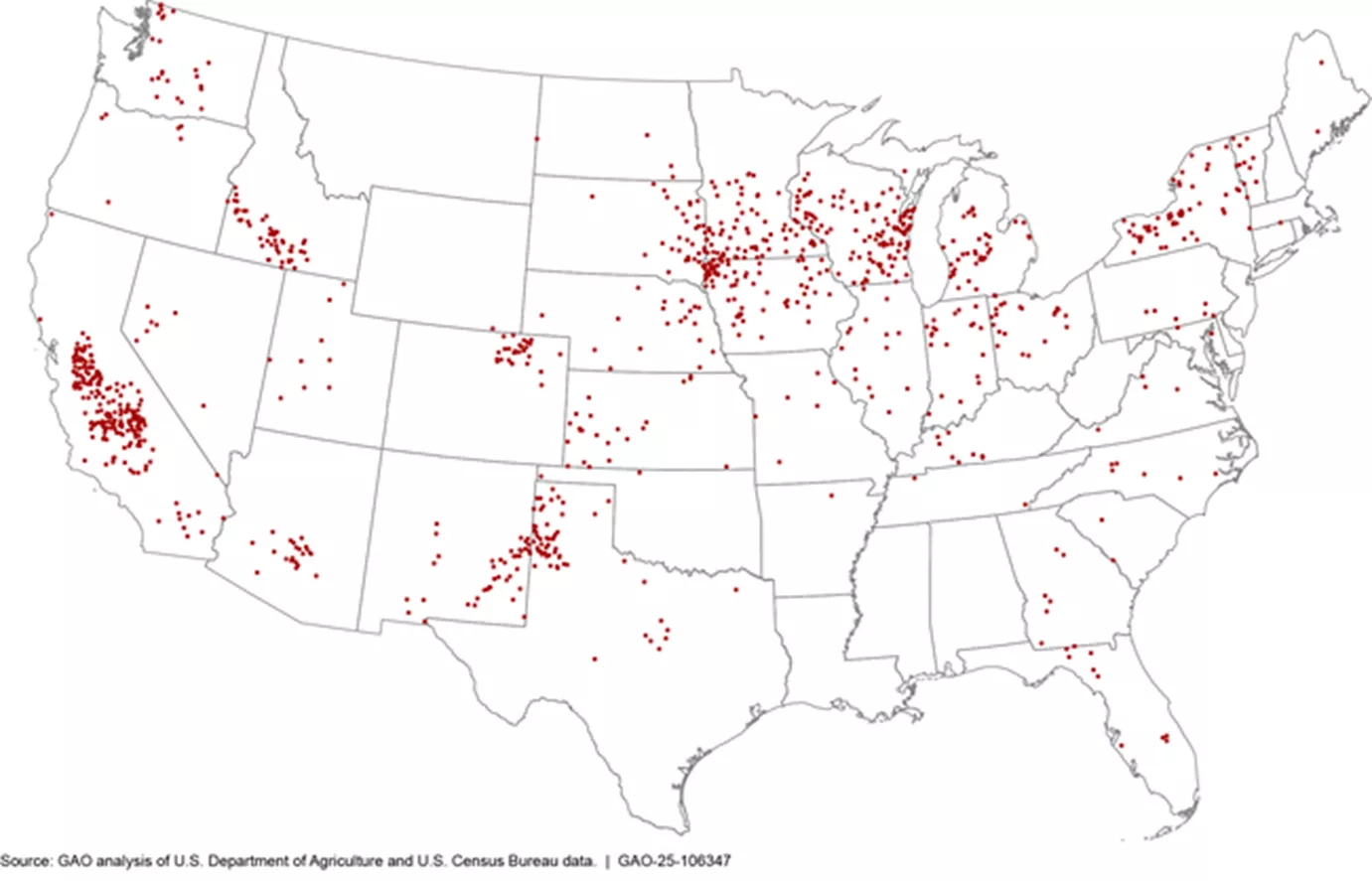Farm Programs
Issue Summary
The U.S. Department of Agriculture (USDA) administers a number of programs to support farm income, assist farmers after disasters, and conserve natural resources. For instance, the Farm Service Agency provided $31 billion in aid to over 950,000 producers of agricultural commodities in 2020 and 2021 to help offset losses and costs associated with the COVID-19 pandemic. However, a review found that many of these payments were potentially improper. In response, the agency worked to ensure that claims for these payments were accurate and that payments were made in the correct amounts.
However, USDA could improve how it administers some of its other farm programs.
For instance:
- Compensation to insurance companies. To implement the federal crop insurance program, USDA partners with private insurance companies that sell and service policies to farmers in order to subsidize these policies. In 2010, USDA negotiated a set rate of return with these companies—that is, how much companies can profit from these insurance policies. However, this expected rate of return was too high compared with market conditions. Reducing this expected rate of return could save the federal crop insurance program hundreds of millions of dollars a year.
- Income limits. The federal crop insurance program is also required to provide the same level of premium subsidies to participants, regardless of income. In contrast, some other USDA farm programs have limits on the income participants can earn and remain eligible for payments. Not having an income limit for the crop insurance program sometimes results in large subsidies for high-income participants. Limiting crop insurance subsidies for high-income participants would save millions of dollars while affecting less than 1% of program participants.
Cost of the Federal Crop Insurance Program, 2011-2022
Image

- Conservation Reserve Program. USDA’s Conservation Reserve Program seeks to offset the detrimental effects that agricultural practices can have on the environment by paying farmers to take land out of crop production and devote it to conservation. This can include establishing grasses and trees that help prevent soil erosion and provide wildlife habitat and preserving and restoring grasslands. In FY 2023, this program paid $1.8 billion for 22.9 million acres. However, USDA could improve its methods for selecting land to boost program benefits and cost-effectiveness—such as using more science-based information to estimate environmental benefits rather than staff’s professional judgment.
- USDA sugar program. USDA administers the U.S. sugar program to support domestic sugar production through tools such as limiting the supply of sugar. But the program creates higher sugar prices, which cost consumers more than producers benefit, at an annual cost to the economy of around $1 billion per year. The program also restricts the amount of sugar entering the U.S. at a low tariff. However, these tariff restrictions are applied using a method based on 40-year-old data and doesn't reflect current market conditions. This has led to fewer sugar imports than expected. USDA should evaluate its method for restricting imports.
- Foreign investment. Foreign investment in U.S. agricultural land grew to about 40 million acres in 2021, per USDA estimates. This can pose national security risks—such as when foreign interests buy land near U.S. military installations. USDA annually publishes data on agricultural land investments, which the Department of Defense (DOD), Treasury, and other agencies may review for risks. However, DOD noted that it needs more specific and timely data. USDA needs to collect, track, and share the data better—and developing a real-time data system would help.
- Livestock feeding operations. The federal government provides assistance for farmers and ranchers who feed livestock. The money is to help them maintain operations when livestock prices are down and revenues decline. From 2018-2023, four USDA programs provided a majority of this assistance to the top 10,000 livestock feeding operations. These operations house a single species in a confined setting such as a building or a pen. These operations received a total of $12.1 billion, an average of $1.2 million per operation. Additionally, the top 20 livestock operations received a total of $219.3 million, an average of $11 million per operation.
Distribution of the Top 1,000 Livestock Feeding Operations by State, 2018 through 2023
Image

Note: We define the top 1,000 operations as those that received the most federal financial assistance.
- Dairy Margin Coverage program. USDA’s Dairy Margin Coverage program provides a safety net for dairy farmers by helping them manage certain risks they face in maintaining their herds and contributing to the U.S. milk supply. Participation rates in the program have varied, and some dairy farmer groups and USDA officials have noted challenges to participation, including challenges related to program awareness. USDA has taken steps to improve its communication about the program, but it has not assessed the effectiveness of these efforts.
- Precision agriculture. Precision agriculture uses technologies such as global positioning system (GPS) or automation to make farms more efficient. These technologies can make farms more profitable and have environmental benefits—like reducing fertilizer runoff in waterways. But they can also be complex and have high up-front costs, making it hard for some farmers to access them. While some of these technologies (such as variable rate fertilizer applications and yield monitoring) have been available since the 1990s, only 27% of U.S. farmers take advantage of them. There are a number of policy options that can help address these challenges and encourage greater adoption of these technologies.

